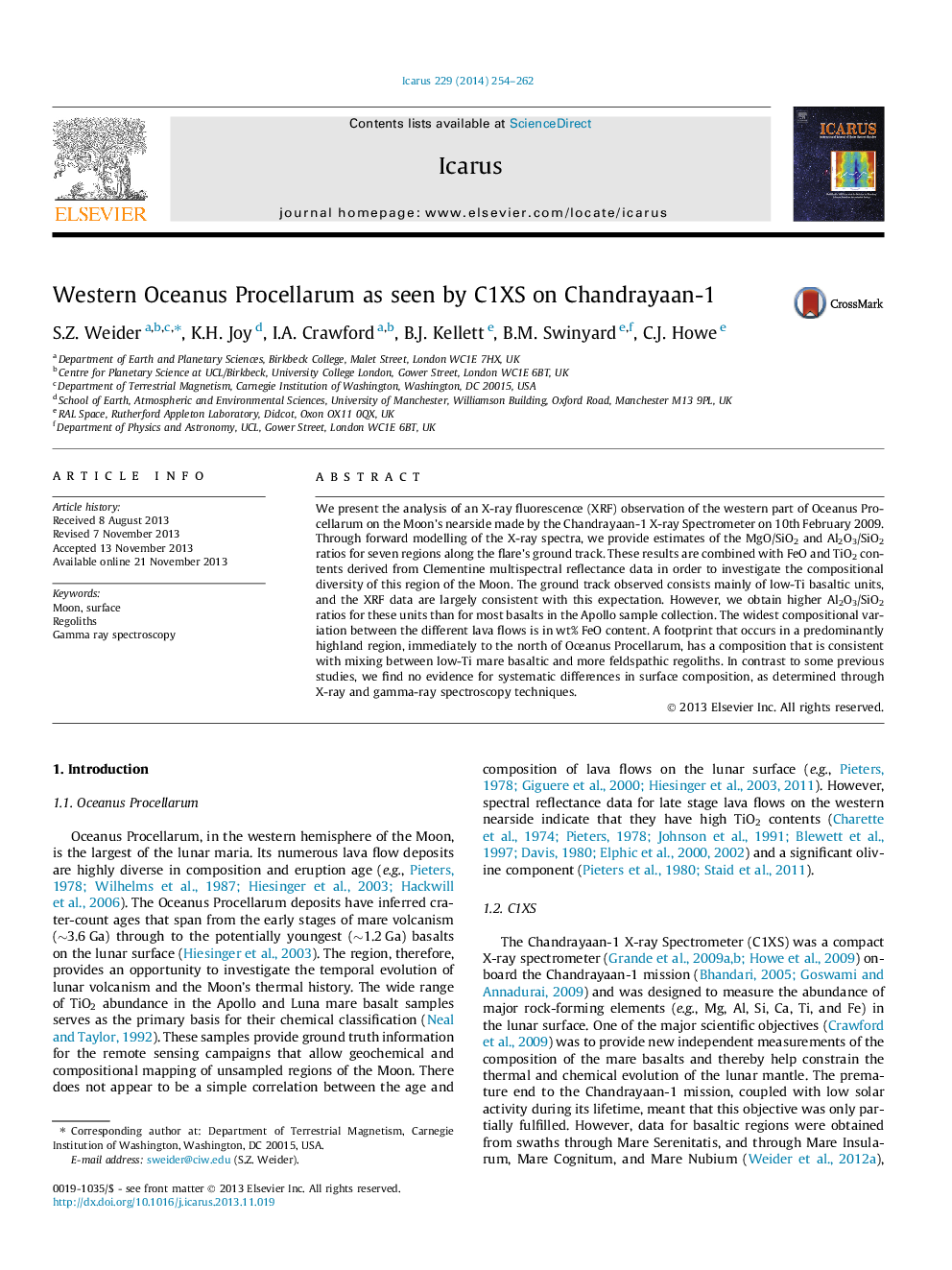| Article ID | Journal | Published Year | Pages | File Type |
|---|---|---|---|---|
| 8138918 | Icarus | 2014 | 9 Pages |
Abstract
We present the analysis of an X-ray fluorescence (XRF) observation of the western part of Oceanus Procellarum on the Moon's nearside made by the Chandrayaan-1 X-ray Spectrometer on 10th February 2009. Through forward modelling of the X-ray spectra, we provide estimates of the MgO/SiO2 and Al2O3/SiO2 ratios for seven regions along the flare's ground track. These results are combined with FeO and TiO2 contents derived from Clementine multispectral reflectance data in order to investigate the compositional diversity of this region of the Moon. The ground track observed consists mainly of low-Ti basaltic units, and the XRF data are largely consistent with this expectation. However, we obtain higher Al2O3/SiO2 ratios for these units than for most basalts in the Apollo sample collection. The widest compositional variation between the different lava flows is in wt% FeO content. A footprint that occurs in a predominantly highland region, immediately to the north of Oceanus Procellarum, has a composition that is consistent with mixing between low-Ti mare basaltic and more feldspathic regoliths. In contrast to some previous studies, we find no evidence for systematic differences in surface composition, as determined through X-ray and gamma-ray spectroscopy techniques.
Related Topics
Physical Sciences and Engineering
Earth and Planetary Sciences
Space and Planetary Science
Authors
S.Z. Weider, K.H. Joy, I.A. Crawford, B.J. Kellett, B.M. Swinyard, C.J. Howe,
